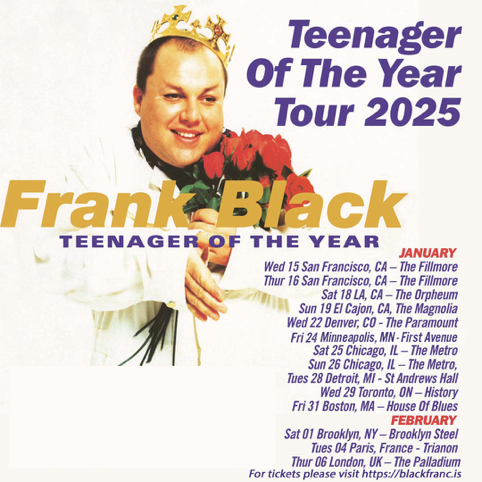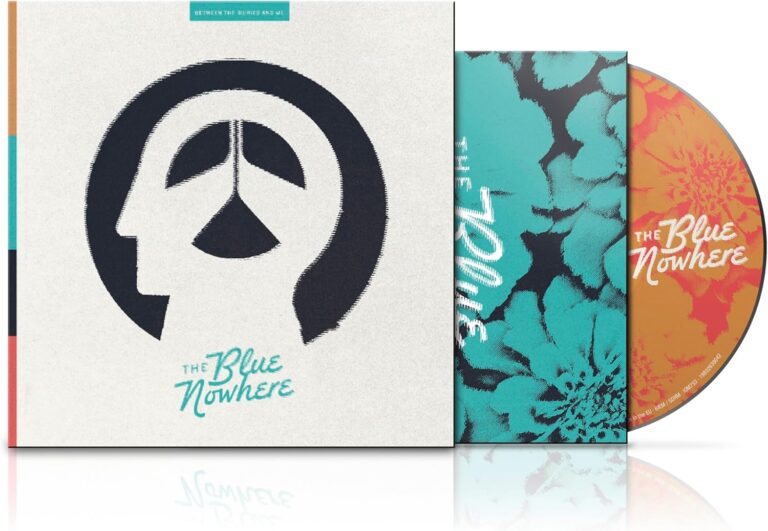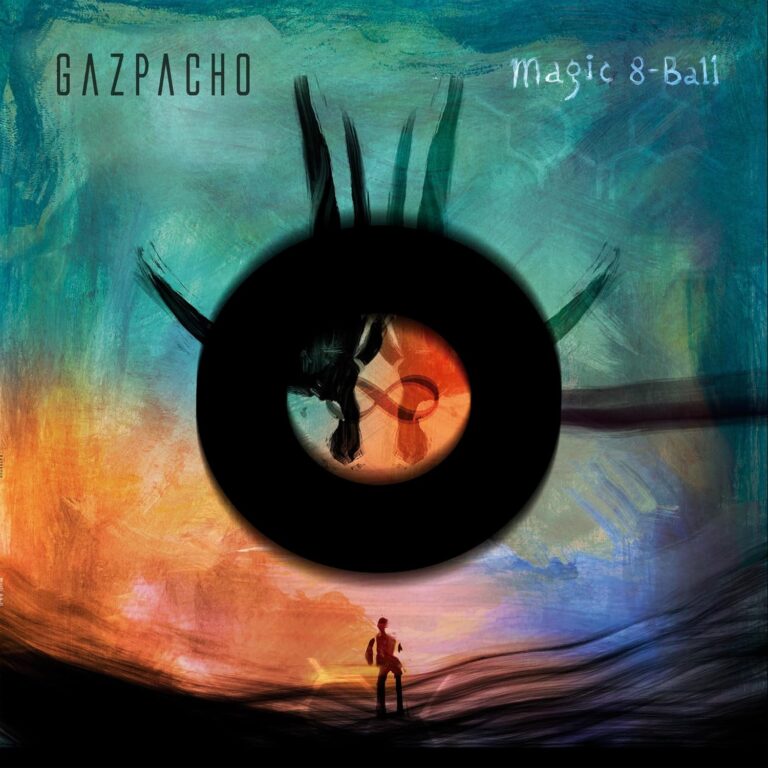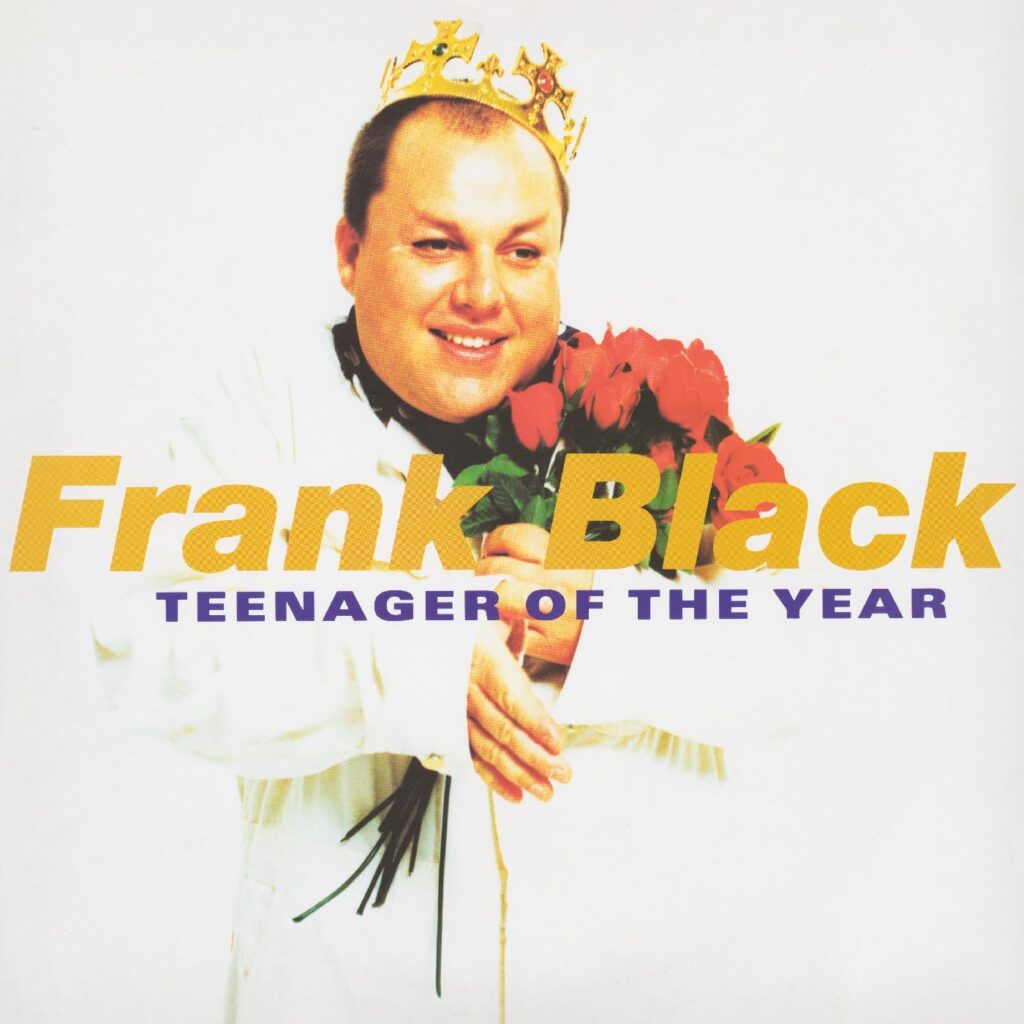
Introduction
It has been an absolute pleasure to witness Frank Black’s solo works achieving greater recognition in recent years, with a range of anniversary releases and anthologies serving to introduce a whole new audience to the remarkable back catalogue of this restless creative spirit. This time, it is 4AD who have turned up trumps, pressing a double vinyl edition of Frank’s esteemed Teenager Of The Year album in order to celebrate its 30th anniversary. Hailed as a “lost Pixies album” by The Quietus and viewed by many as his finest work outside of that esteemed band, this beautifully pressed edition is the perfect way for old hands to reacquaint themselves with its charms, and for newcomers to experience it for the very first time.
The Package
This lovely, anniversary edition of Teenager Of The Year arrives in a gatefold sleeve with stream-of-consciousness lyrics and production credits printed (white on black) on the inside. There are, sadly, no photos beyond those on the cover and reverse of the sleeve – which is a bit of a shame. Otherwise, there’s a gold foil hype sticker adorning the front, with the album title, two lengthy review exerts, and 2025 tour dates printed across it.
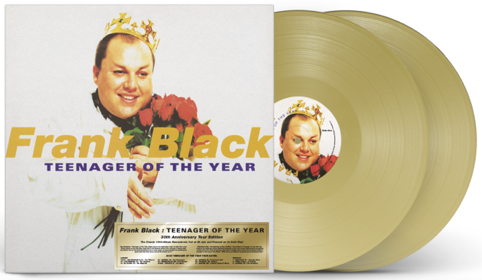
The discs are housed in printed liners (one black, one white), with the black one, appropriately enough, bearing liners notes from Black Francis; and the white offering a brief note from producer Eric Drew Feldman.
The platters are pressed on gold vinyl at 45RPM to ensure the best possible sound quality – an approach to quality that echoes the excellent Frank Black and the Catholics reissues on Demon Records. It is a wonderful pressing, too. We’ve had ours on the turntable several times, with no discernible crackles or bumps, while the music sounds beautifully crisp and clean throughout. Whether you own a previous edition or not, this is absolutely worth the upgrade – it’s a sonic treat and it only goes to further reinforce the brilliance of Eric Drew Feldman’s production work.
The Album
In short, this is a high quality and thoughtful package offering pretty much all you could want as a celebration of a classic album.
At twenty-two tracks in length, Teenager Of The Year is a sprawling record, even if many of the songs fail to hit the three-minute mark. Driven by scattershot invention and inevitably infused with the turmoil of the band finding themselves literally burnt out of the studio, there’s a sense of going for broke here that tumbles from each crowded side of vinyl. Brilliantly sequenced, Teenager Of The Year absolutely delights in taking the listener by surprise. For sure there are plenty of songs that sound Pixies-esque, but the album offers far more than that, with sonic digressions taking influence from hip-hop, dub, and ska (sometimes all at once). Yet, despite the album’s length and variety, it’s never tiring. There’s a lightness of touch that makes each moment fly past, and you’ll find yourself putting it on – maybe just to listen to a side – only to find yourself, some forty minutes later, having once again blazed through the complete record. Aided by fantastic production, and crackling with life, it’s a record that manages to successfully convey the energy of the sessions to the listener, and you invariably find yourself feeling strangely euphoric at its conclusion.
Side 1
It opens… strangely. Whatever you may have expected from the opening track, Frank and Eric neatly wrongfoot the listener with the strangely woozy introduction to Whatever Happened To Pong? With synths and strings thrown into the mix, you’d be forgiven for expecting a ballad, which only makes the sudden switching of lanes into the off-kilter punk-metal territory of Trompe Le Monde all the more overwhelming. Nor does he slacken the pace with the stabbing insanity of Thalassocracy, which does much to demonstrate both Frank’s wide-eyed fervour and the depth of Eric’s production, which captures the guitars with a weight that is utterly thrilling.
With his restless muse whispering in his ear, Frank leads his band into the lovely alt-pop of (I Want To Live On An) Abstract Plain, which lacks only Kim Deal’s backing vocals to make it utterly perfect. In their place, we get keyboards with a surprisingly baggy influence flitting through the mix before Frank slips the gears once again and we drift down an imaginary highway with Calistan blasting from the open windows. Following at a more sedate pace, The Vanishing Spies finds Frank channelling Bob Dylan as he crams syllables against the unforgiving frame of a mid-paced ballad before wrapping up an exceptional first side with Speedy Marie. A lighter jam, it finds airy synths, liquid super-surf guitar, and hushed vocals, all serving to recall the unutterable majesty of Gouge Away, and you find yourself drifting away on a sea of countrified space-rock.
Side 2
After so promising a start, the second side has a hard act to follow. Fortunately, acoustic rocker Headachekicks things off with a cheeky nod to Doolittle. It’s followed by Sir Rockaby – a sweetly somnolent piece, complete with falsetto vocals, great bass work (from Eric), and even a guest spot on the guitar from Frank’s old pal Joey Santiago. The pace picks up with the crunchy Freedom Rock, which finds Nick Vincent impersonating a human octopus behind the kit as Frank and Eric throw everything but the kitchen sink into the mix. If Pixies did Meat Loaf covers, it would sound like this and it. Is. AWESOME.
That they follow it up with the schizophrenic Two Reelers is a master stroke. Part giddy-eyed prog-punk, part space rock, it makes you wonder just where the album may go next, only for Frank to take things yet a step further into the absurd with the frankly bizarre ska-bounce of Fiddle Riddle.
How… How anyone ever thought this was a good idea is beyond me. It’s insane. It shouldn’t work. It doeswork. It’s a perfect example of Frank’s rare ability to slip down pathways no sane artist would dare to tread, and it wraps the side up beautifully.
Side 3
Opening side 3, Ole Mulholland finds Frank and Eric engaging with the skronky, hip-hop-influenced synth pop of Ciccone Youth, with bristling beats, stabbing guitar noise, 70’s sci-fi sounds, and rock ‘n’ roll piano all coalescing around a vocal that is pure Thurston in its delivery. Impossible to describe and almost impossibly brilliant, just listen to the thing, because I’ll never in a million years find the words to express the feeling of wonder it evokes.
The album returns to more familiar territory with Fazer Eyes, a track that focuses primarily on Eric’s sanguine bass, the guitar adding splashes of colour in a manner from which Blur would liberally borrow on their self-titled album a few years later. Yet more glorious excess abounds on I Could Stay Here Forever, a short track that implausibly adds strings to the introduction, before segueing to one of the album’s most hook-laden choruses. You’ll be singing it for days.
Led by a nimble riff, The Hostess With The Mostest emerges from a scree of feedback driven by an off-kilter mid-tempo beat, only to edge into Meat Puppets territory with its country-punk vibe and carnival outro. Then, just in case you weren’t already paying attention, side-closer Superabound finds Frank Black channelling Jarvis Cocker on a country-indie-punk-pop-rock… um, thing that gleefully defies all categorisation as it hops from genre to genre with an agility for which most bands would kill.
Side 4
Even some 16 tracks in to the album, the listener still has absolutely no clue what to expect and opening number Big Red changes things up yet again, with Frank operating in a territory more commonly associated with the likes of Barry Adamson. A smooth rocker with a bluesy pulse, it’s a great track, with the added bonus of Morris Tepper’s astringent lead work. Next up. Space Is Gonna Do Me Good reminds us once again that Frank Black, in many ways, is the natural successor to Lou Reed, with his ability to combine the most abstract of musical ideas with the most glorious of pop melodies.
Something of a misnomer, far from being a hard-edged freak out, White Noise Maker is a glorious pop song in a fifties mould, for all of the crunchy distortion of the chorus. It’s followed by a trio of songs all featuring Joey Santiago on lead. The first of these, Pure Denizen Of The Citizen’s Band, draws an unexpected link between Pixies and White Stripes, with Frank indulging his love of story-book melodies. Next up, Bad, Wicked World rampages past in under two-minutes, Frank and Joey clearly enjoying chasing each other’s riffs around the studio. Finally, the album comes to a suitably ramshackle end with the frantic Pie In The Sky, which feels like an in-studio celebration from a group of musicians who know they’ve made something great and had a ball doing it.
Conclusion
Frank Black’s solo work does not often get the respect it deserves. Whether under his own name or with the Catholics, he has amassed a catalogue that easily matches and (in some cases) eclipses that of the Pixies. Teenager Of The Year is a case in point. It follows no plan, adheres to no genres, and every single track feels like it’s painted in neon.
This is the sound of an artist giving into his muse and finding nothing there but joy, and the twenty-two tracks fly by. An album so gloriously varied, your favourite track will change every time you listen, and you’ll never, never be able to think of it as being thirty years old – it’s too alive, too thrillingly vital, making it easy to imagine rock fans discovering it in another three decades and falling in love all over again.
A brilliant reissue of a perfect album, this is the celebration Teenager Of The Year deserves. 10/10
